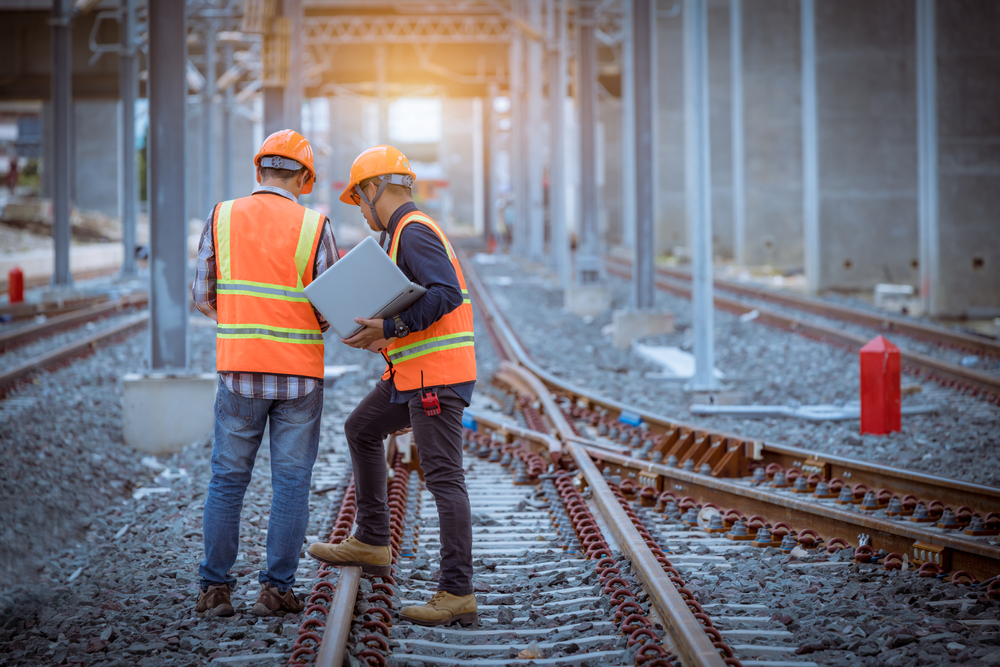Q&A: Senior Rail Engineer Dave Bearse shares insights into the Georgia Department of Transportation’s (GDOT) Highway-Rail Grade Crossing Safety (Section 130) Program.
Q: What’s your role in the Section 130 Program?
I serve as the technical lead for the Atlas work within the Section 130 Program. My focus is on coordinating and overseeing the technical aspects of railroad safety improvements, working closely with GDOT, CSX Transportation (CSXT), cities, counties, and other stakeholders.
Q: Could you provide some background on the Section 130 Program and its origins from your perspective?
The program originated in response to highway safety concerns back in the late 1960s and early 1970s. When the federal government noticed a significant number of fatalities at highway railroad grade crossings, prompting the use of highway safety funds to install flashing lights and gates, which proved to be effective in reducing crashes over the years. The program also currently includes passive warning devices, crossing elimination, and other safety improvements or hazard eliminations such as signing and pavement marking projects, crossing geometry improvements, and crossing closure incentives as well as construction facilitating crossing closures.
Q: Could you elaborate on how your team determines what crossings need improvement?
We work closely with GDOT and railroad consultants to identify crossings that need improvement. Our goal is to maximize safety benefits within the allocated funds. This involves recommending various improvements, such as flashing lights and gates, geometric improvements or suggesting the closure of certain crossings to reduce crash risks.
Q: Can you share some notable achievements or successes of the railroad safety program?
Over the years, the program has significantly reduced fatalities and crashes at railroad grade crossings. Notable achievements include the successful installation of safety features, as well as signing and marking projects to enhance awareness and visibility. Atlas prepared the Georgia Safety Action Plan and an update that were well-received by the Federal Railroad Administration (FRA).
Q: Why might railroad companies be hesitant about installations on their property? How does the program address this concern?
Railroad companies see their property as a valuable asset and may be cautious about alterations. However, we’ve established a mutual understanding that safety improvements benefit both parties. While not legally required to fund these enhancements, railroad companies play a vital role in executing installations as part of a mutually agreed-upon arrangement.
Q: Can you explain the technology behind railroad crossings and how it has evolved over the years, particularly in terms of safety and monitoring?
The technology at railroad crossings has evolved significantly from electromechanical relays in the early days. By the 1980s, these were replaced with computer systems. Nowadays, new installations come with a recording system, essentially a black box, that logs every event at the crossing. Railroads can remotely monitor and analyze this data, ensuring a more efficient and safer operation.
Q: You mentioned false activations and rare instances of activation failures. Could you elaborate on how the system handles these issues, especially in the context of lightning or other disruptions?
The system is designed to be fail-safe. In the case of lightning or other disruptions, the equipment is sensitive enough to detect abnormalities and respond accordingly. False activations, though rare, can occur, but the modern technology is far more reliable in distinguishing between genuine train movements and external disturbances. It’s a critical aspect of ensuring the safety and functionality of railroad crossings.
Q: How do you determine which railroad crossings need improvements or upgrades? Are there specific criteria or factors that play a role in prioritizing these enhancements?
Prioritizing improvements involves a comprehensive evaluation. Factors include the number of trains and vehicles, the type of warning devices in place, school bus and passenger train usage, and crash history. This data feeds into a prioritization system, but it’s not solely based on numerical values. There are subjective elements, like sight distance, proximity to intersections and the crest at the crossing, that contribute to the decision-making process.
Q: What are some common challenges in improving railroad crossings, and how do you address them?
One significant challenge is the vast number of crossings that still lack active warning devices. Approximately one half of the 5,000 public crossings in Georgia don’t have gates, presenting a considerable pool for potential improvements. The challenge lies in balancing resources to address these crossings effectively. Additionally, addressing subjective factors like crest and other geometric deficiencies can be challenging, but they are crucial for overall safety.
Q: Could you share insights into the collaboration with CSX Transportation and how they contribute to the Section 130 Program?
CSX Transportation is a key partner, sharing data that aids in maintaining and updating records for GDOT. The collaboration extends to implementing safety improvements, with CSXT agreeing to maintain the signals installed by GDOT in perpetuity. This partnership highlights the shared commitment to enhancing safety at railroad crossings.
Q: How has the landscape of railroad safety changed over the years? What trends or challenges do you foresee in the future?
Railroad safety has seen significant improvements, particularly with the widespread adoption of flashing lights and gate signals. However, challenges persist, such as the need for ongoing maintenance and replacement of aging infrastructure. Looking ahead, the focus will likely shift from installing new devices to maintaining and improving existing ones, ensuring they remain effective and safe.
Q: What role does data play in your decision-making process? How has it evolved in the last decade?
Data is integral to our decision-making process. With advancements in technology, there’s now an abundance of data available, including crash records, train and vehicle counts, and warning device types. This data helps us identify high-priority crossings and allocate resources effectively. The transition in recent years involves recognizing the importance of maintaining and improving existing infrastructure rather than solely focusing on installing new safety devices.
Q: Final question here Dave, are there any specific initiatives or innovations in the railroad safety sector that you find particularly promising or impactful?
No problem, this was fun. The continuous improvement in technology, such as remote monitoring and recording systems, holds promise for enhancing railroad safety. Additionally, the industry’s recognition of the need to transition from installing new devices to maintaining and improving existing ones is a positive shift. As technology continues to evolve, we can expect further innovations that contribute to the overall safety and efficiency of railroad crossings.

Dave Bearse
Transportation Planning, Senior Rail Engineer
Dave Bearse has been employed as a railroad signal manager or railroad consultant for 40 years since civil engineering graduate school at Michigan Tech. His primary work since 2005 has been in support of GDOT’s administration of the federal Section 130 Program that funds highway‑rail railroad crossing safety improvements.
